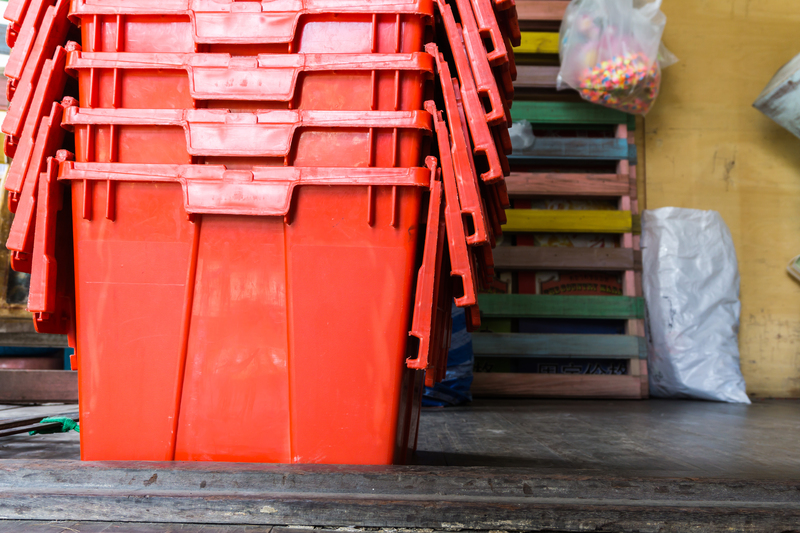What to Know Before You Move Your Bed and Mattress
Moving is never easy, and one of the biggest challenges is relocating your bed and mattress. These are not only substantial investments but also critical to your comfort. In this comprehensive guide, we'll tell you what to know before you move your bed and mattress, including the best tips for preparation, transport, and setup in your new home. Whether hiring professional movers or tackling the transition yourself, this article will help ensure your bed and mattress arrive safely and are ready for your first night's sleep.
Why Proper Bed and Mattress Moving Matters
Your bed and mattress are more than just furniture--they're where you recharge after long days. Improper handling can lead to physical damage, hygiene issues, or even structural problems. Knowing the right way to move a bed and mattress can save you time, energy, and money.
Risks of Moving Beds and Mattresses Incorrectly
- Physical Damage: Frames can break; mattresses can tear, bend, or develop lumps.
- Stains and Soiling: Exposure to dirt, moisture, or rain can ruin the mattress.
- Personal Injury: Beds and mattresses are heavy and unwieldy, risking strain or injury if not handled with care.
- Inconvenience: Poor disassembly or reassembly can make your first night in a new home uncomfortable.

Pre-Move Preparations
Taking the time to prepare your bed and mattress for a move will simplify the process and protect your belongings.
Measure Everything
- Measure your mattress dimensions and bed frame.
- Check doorways, halls, and staircases in both old and new homes. Avoid last-minute surprises!
Tip: Write down the dimensions for easy reference.
Gather Moving Supplies
- Mattress Bag or Cover: Protects against dirt, spills, and pests.
- Furniture Blankets: Prevents scratches and dents on bed frames.
- Moving Straps: Helps you carry large or heavy items safely.
- Tool Kit: Needed for disassembly and reassembly.
- Boxes and Labels: For bed parts, hardware, and linens.
- Bubble Wrap: To cushion fragile headboards or decorative pieces.
Disassembling the Bed Frame
Most beds are too large to move in one piece. Disassembling the bed frame makes moving easier and minimizes the risk of damage.
- Remove bedding and mattress first.
- Take apart the headboard, footboard, and side rails. Keep hardware in labeled bags.
- Photograph steps or parts for easy reassembly. It's a small effort that pays off later!
Cleaning Before You Move
- Vacuum your mattress and bed frame to remove dust, dirt, and allergens.
- Spot-clean stains with a gentle cleaner, allowing everything to dry before packing.
- Remove any storage items from under the bed.
Why Clean Now? You don't want to bring old dust or allergens into your new space!
Packing and Protecting Your Mattress and Bed
Mattress Protection Tips:
- Use a mattress bag for a snug, secure fit. It shields from dust, moisture, and bugs.
- Seal with strong moving tape. Double check no areas are exposed.
- If moving in the rain, wrap with an extra plastic sheet for waterproofing.
Packing Bed Frames and Parts
- Wrap wood or metal pieces with moving blankets or bubble wrap to prevent scratches.
- Bundle similar pieces together for easy transport.
- Place hardware and small pieces in labeled Ziplock bags.
Pro Tip: Tape the hardware bag to the largest frame piece so it's easy to find during reassembly.
How to Move Your Mattress and Bed Safely
Moving a mattress and bed requires more than muscle--it takes a plan!
Choosing Movers vs. DIY Moving
-
Professional Movers:
- Experienced in handling bulky furniture.
- Can provide mattress bags, blankets, and padding.
- Offers insurance for peace of mind.
-
DIY Move:
- Rent or borrow a van or truck with enough space.
- Recruit help--mattresses aren't made for solo lifting!
- Secure everything in the vehicle to avoid shifting in transit.
*Consider cost, distance, and your physical capability when deciding.*
Lifting and Carrying Techniques
- Bend at your knees, not your back, when lifting.
- Always lift with at least one partner for queen and king beds.
- Use moving straps for added stability.
- Keep pathways clear of tripping hazards before moving large items.
How to Move a Mattress Through Tight Spaces
- Stand the mattress on its side to fit around corners.
- Use light pushing and pulling--never force or bend aggressively.
- Remove doors temporarily if width is an issue.
Mattress must remain as flat as possible. Excessive bending can damage the internal structure, especially in spring or hybrid mattresses.
Transportation and In-Transit Care
Loading Tips
- Load the mattress flat in the moving vehicle to maintain shape and structure.
- Avoid placing heavy objects on top. This can permanently damage the mattress.
- Secure the mattress and frame pieces with tie-downs or ropes to prevent sliding during transport.
- For long-distance moves, consider a climate-controlled vehicle if possible. Extreme heat or cold can affect mattress materials.
When Moving a Bed Frame
- Load largest pieces first.
- Cushion headboards, footboards, and rails between blankets or soft furniture to avoid dents or scratches.
- Double check nothing is sticking out that could catch on doors or damage vehicle interiors.
Setting Up Your Bed and Mattress in a New Home
Once at your destination, follow these steps for a smooth reassembly and setup.
Reassembling the Bed Frame
- Refer to photos or manuals taken during disassembly.
- Lay out all the frame pieces and hardware before starting.
- Reassemble in the intended room--frames can be difficult to move once whole.
- Tighten all connections firmly to prevent squeaking or instability.
Pro Tip: Place the bed frame on an area rug if you want to protect hardwood floors and reduce noise.
Unpacking and Setting Up the Mattress
- Remove the plastic cover or bag--air out the mattress before making the bed.
- Inspect for any damage that may have occurred during transport.
- If your mattress is memory foam, let it breathe for several hours. This helps regain its shape and get rid of any odors.
- Rotate or flip the mattress as recommended by the manufacturer to maintain longevity.
Check for Problems
- Listen for squeaks or creaks from the frame. Tighten bolts or adjust as needed.
- Check the mattress for sagging, lumps, or rips. Contact movers or insurance if you notice damage.
Special Considerations When Moving Different Types of Beds or Mattresses
Not all mattresses and beds are alike. Here are specific tips for various types:
Memory Foam and Latex Mattresses
- Never bend in half--use a larger vehicle if needed.
- Keep flat or rolled as per manufacturer instructions.
Spring and Hybrid Mattresses
- Should always be moved on their side or flat to avoid compressing or damaging inner springs.
- Use additional edge protectors if available.
Adjustable Beds
- Unplug all electronics and secure cords separately.
- Disassemble according to the manual and label all components.
Platform Beds, Bunk Beds, and Canopies
- Take extra time to label and group hardware.
- Photograph each step as these beds have many parts.
- Secure any slats, ladders, or decorative elements individually.
Smart Tips to Make Moving Your Bed and Mattress Easier
- Schedule in Advance: Give yourself ample time. Rushing can lead to mistakes or injuries.
- Use Original Packaging: If you saved original mattress or bed frame boxes, they offer the best fit and protection.
- Label Everything: Don't trust your memory; labels and checklists pay off.
- Ask for Help: Even lightweight mattresses are unwieldy. Extra hands make the job safer and quicker.
- Check Your Route: Look ahead for narrow doors, tight corners, or steep stairs.
- Watch the Weather: Rain or snow can damage mattresses. Waterproof covers are a lifesaver!
- Clean As You Go: Take the opportunity to deep clean areas under and around your bed before setting up in your new space.

Frequently Asked Questions About Moving Beds and Mattresses
How do you move a king-size bed?
King beds need to be completely disassembled (including frame and box spring). Use a moving truck large enough to accommodate the mattress flat, and always have at least one person assist you.
Can you fold a memory foam mattress for moving?
Many memory foam mattresses can be gently bent or rolled for short moves, but always check the manufacturer's instructions. Some types will not regain their shape if compressed for too long.
Is it worth hiring professionals to move my bed and mattress?
If your bed or mattress is expensive, heavy, or in tight quarters, professional movers can ensure safe handling and minimize risk of damage.
How do I prevent my mattress from getting dirty during the move?
Always use a high-quality mattress bag and extra wrapping if weather is an issue. This keeps the mattress clean, dry, and pest-free.
Conclusion: Move Your Bed and Mattress with Confidence
Understanding what to know before you move your bed and mattress is essential for a successful transition. Proper planning, the right materials, safe techniques, and attention to detail make all the difference.
- Prep and protect your bed and mattress before the move.
- Use care when lifting, loading, and transporting.
- Unpack and reassemble thoughtfully in your new space.
Your bed is where you rest and recharge. Treat it right during your move and it will provide comfort for years to come.
Ready for your next big move? With these tips, you can move your bed and mattress with confidence, knowing you've taken every step to ensure a good night's sleep in your new home.



